You can finance adaptive sports equipment through equipment loan programs, health insurance coverage, veteran-specific funding, charitable foundation grants, manufacturer payment plans, crowdfunding campaigns, and tax deductions. Many organizations like Challenged Athletes Foundation offer financial assistance, while the VA provides grants up to $14.5 million for eligible veterans. Don’t overlook medical necessity documentation for insurance claims and potential tax benefits. These seven strategies can transform your athletic journey from dream to reality.
Equipment Loan Programs: Access Without Full Investment
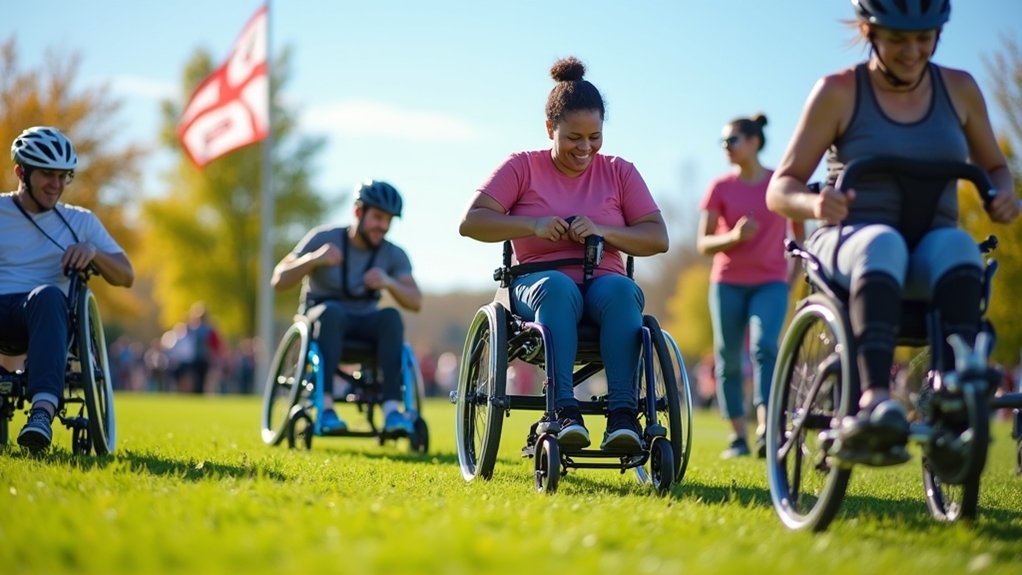
When the high cost of adaptive sports equipment becomes a barrier to participation, equipment loan programs offer a practical solution without requiring a full financial investment.
These programs provide access to specialized gear like sports wheelchairs and hand cycles for varying periods—from weekend events to extended training.
You’ll find multiple options through organizations like Synergy Adaptive Athletics and Sportable, as well as local community centers. Organizations like WDSRA maintain an extensive inventory of sports wheelchairs, hand cycles, and specialized equipment that can be borrowed for use outside of organized programs.
When borrowing equipment, you’ll typically sign agreements, possibly pay small fees or deposits, and commit to returning items in their original condition.
The benefits extend beyond financial accessibility—you can test equipment before purchasing, connect with other athletes, and participate in both competitive events and recreational activities while determining which adaptive sports best suit your interests.
Health Insurance Coverage Options for Adaptive Equipment
Exploring permanent equipment access beyond loans brings us to an essential funding source: health insurance. Medicaid may cover medically necessary adaptive sports equipment that supports daily activities, but you’ll need to meet specific criteria.
If your state has preapproved equipment lists, you can still request items not listed. When denied, utilize the fair hearing process to appeal. Remember that categorical denials for disability-related equipment aren’t permitted.
Private insurance policies vary greatly, typically requiring medical necessity documentation from network providers. Pre-authorization is often needed, and you may face out-of-pocket costs depending on your plan. Several organizations like the Challenged Athletes Foundation offer additional grants that can help cover expenses not met by insurance.
For specialized needs, consider programs like CHIP for children or disability-specific insurance plans that offer more detailed coverage. If denied, you always have the right to appeal through internal and external review processes.
Veteran-Specific Funding Resources and Programs
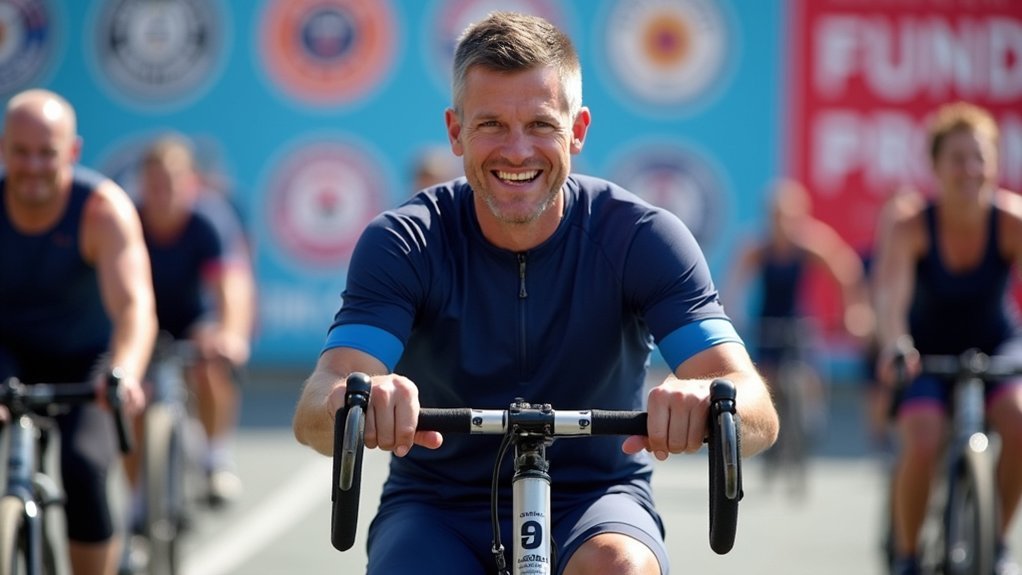
Veterans with disabilities have access to specialized funding programs designed specifically for their adaptive sports needs.
The VA Adaptive Sports Grant Program offers substantial funding opportunities to help you participate in adaptive sports activities that enhance independence and quality of life.
- Annual grants of up to $14.5 million are distributed through a Notice of Funding Availability on grants.gov
- Programs focus on instruction, participation, competition, and training in adaptive sports
- You’ll need to work with eligible organizations that have significant experience with adaptive sports
- Federal agencies can’t apply directly but can partner with non-federal entities
- Applications require specific forms including VA Form 10096 and VA Form 10091, with decisions typically made by September 30
Developing a strong grant application requires conducting thorough research writing to effectively communicate your needs and alignment with program goals.
Charitable Foundations and Grant Opportunities
Beyond government programs, numerous charitable foundations offer substantial financial support for adaptive sports equipment. The Challenged Athletes Foundation provides grants to remove financial barriers, while the Kelly Brush Foundation specifically assists individuals with paralysis.
You’ll find equipment-focused opportunities through The Hartford’s Adaptive Sports Equipment Grant ($20,000-$50,000) and CAF’s Equipment Grants for necessary adaptive gear. The Hartford and Move United’s grants require that at least 50% of the budget be allocated for new, large-scale adaptive sports equipment.
Organizations like Move United and Dare2Tri offer financial assistance for both equipment and participation costs.
When applying, note the specific eligibility requirements. CAF requires permanent physical disabilities affecting mobility, while Kelly Brush Foundation grants are exclusively for those with spinal cord injury-related paralysis.
Many programs have cyclical application periods, so research deadlines carefully to maximize your chances of securing funding for your adaptive sports journey.
Flexible Payment Plans and Financing Through Manufacturers
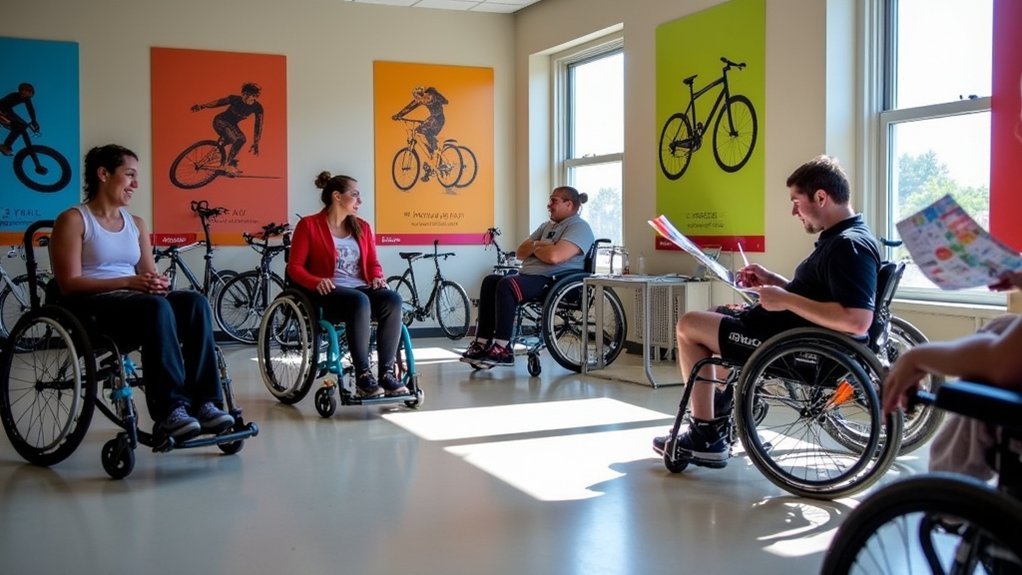
While the upfront cost of adaptive sports equipment can be challenging, many manufacturers now offer flexible payment options to make these essential items more accessible.
You’ll find various financing structures designed specifically for high-value adaptive equipment purchases.
- Manufacturers partner with financial institutions to offer tailored interest rates based on your credit profile.
- Payment plans allow you to spread costs over months or years with customizable monthly installments.
- Down payment requirements vary, with high-end equipment typically requiring larger initial payments.
- Direct purchase incentives like cashback offers or accessory discounts might offset financing costs.
- Custom payment schedules can be arranged through equipment dealers who understand your specific financial situation.
For those who find manufacturer financing insufficient, consider applying for CAF Grants which support individuals with permanent physical disabilities in acquiring sports equipment.
When exploring these options, consider both immediate affordability and long-term financial impact before making your decision.
Creative Fundraising and Crowdfunding Campaigns
Financing adaptive sports equipment often requires thinking outside conventional funding methods, which is where creative fundraising and crowdfunding campaigns become invaluable resources.
You’ll find hosting events like wheelchair basketball tournaments effectively engages local communities while attracting business sponsorships.
Crowdfunding offers particularly powerful opportunities when you incorporate compelling stories and videos across social media platforms. Using relevant hashtags and providing direct donation links can greatly increase your campaign’s visibility and success rate.
Consider organizing equipment donation drives with convenient drop-off locations at local businesses. You can generate ongoing funding by selling or renting donated equipment.
Don’t overlook collaboration possibilities with foundations like the Challenged Athletes Foundation, which specifically offers grants for adaptive sports equipment. Partnering with equipment suppliers might also secure you preferred pricing and additional support.
Setting up fitness challenges encourages participants to seek personal sponsorships while promoting inclusive physical activities for everyone in the community.
Tax Deductions and Medical Expense Benefits
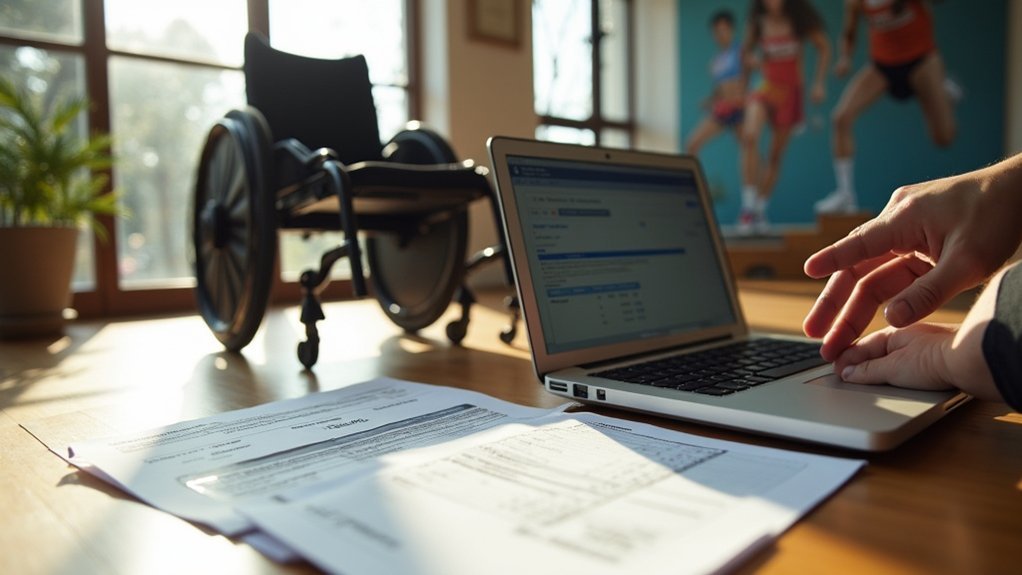
Understanding tax benefits can greatly reduce the financial burden of adaptive sports equipment. Many adaptive devices qualify as durable medical equipment, potentially making them tax-deductible when prescribed by a doctor.
Tax benefits can significantly lower costs for adaptive sports equipment when properly documented as medical necessities.
- Businesses with fewer than 30 employees may claim the ADA Tax Credit (up to $5,000) using IRS Form 8826.
- While you can’t deduct the full cost of wheelchair-accessible vehicles, modifications like ramps and lifts often qualify.
- Medical equipment including wheelchairs, scooters, and communication devices can be deductible medical expenses.
- Some states offer sales tax exemptions for mobility devices with proper documentation.
- Home accessibility improvements related to your medical condition may qualify for deductions.
Businesses of all sizes can take advantage of the Section 190 tax deduction of up to $15,000 per year for barrier removal and accessibility alterations.
Always maintain thorough documentation, including prescriptions and receipts.
Consider consulting a tax professional to maximize your benefits by combining federal and state incentives.
Frequently Asked Questions
Can Rental Equipment Be Converted to Purchase Later On?
Yes, you can often convert rental equipment to purchase later on. RPOs allow you to apply rental payments toward buying the equipment, giving you flexibility to try before committing to ownership.
Do Schools Provide Financial Assistance for Adaptive Equipment?
Yes, schools can provide financial assistance for adaptive equipment through IDEA funding, specialized programs, and school-based grants. You’ll need to collaborate with administrators to access these resources based on eligibility criteria.
How Long Does the Typical Grant Application Process Take?
You’ll typically spend 10-100+ hours writing a grant application. The entire process takes anywhere from 3-18 months, depending on the grant type, application quality, submission volume, and funder’s review schedule.
Are There Tax Benefits for Businesses Donating Adaptive Equipment?
Yes, as a business, you can receive tax deductions when donating adaptive equipment. You’ll typically get to deduct the fair market value, though donations over $5,000 require qualified appraisals for IRS acceptance.
Can Adaptive Equipment Costs Qualify for Disability Tax Credits?
Yes, you can claim disability tax credits for adaptive equipment. Businesses can receive a 50% tax credit on eligible accessibility expenditures between $250-$10,250, with a maximum credit of $5,000 annually through IRS Form 8826.
In Summary
Don’t let financial barriers keep you from adaptive sports. You’ve now got seven practical ways to fund equipment that meets your needs. Whether you’re borrowing gear, tapping insurance benefits, or launching a crowdfunding campaign, these options make participation possible. Remember to explore tax advantages too. With these resources at your disposal, you’re well-equipped to pursue the activities you love.

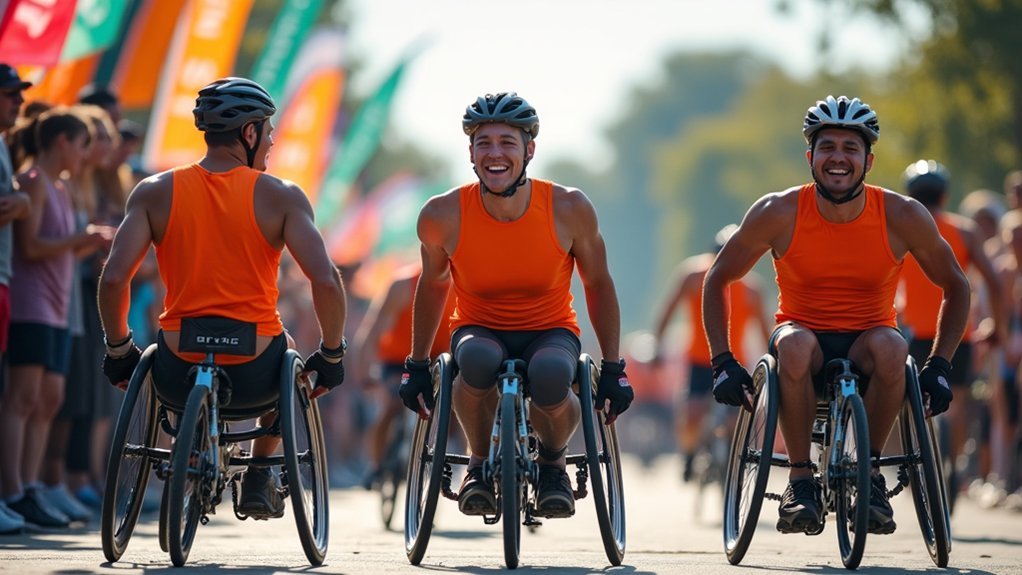



Leave a Reply